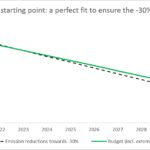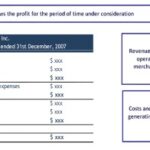
In the double-entry accounting process, all transactions get posted as both debits and credits. Individuals could also use the process to verify the accuracy of their banking and credit card accounts. The reconciliation process balances 2 sets of figures with the aim of both being equal. Reconciliation then lets those managing the process ensure that the figures are correct and in agreement. It helps eliminate fraud and any accounting errors, helping a business be more efficient. Analytics review uses previous account activity levels or historical activity to estimate the amount that should be recorded in the account.
- The bank reconciliation ensures your bank account ending balance matches the balance reflected in your general ledger.
- It is possible to have certain transactions that have been recorded as paid in the internal cash register but that do not appear as paid in the bank statement.
- The reconciliation process includes reconciling your bank account statements, but it also includes a review of other accounts and transactions that need to be completed regularly.
- Reconciliation must be performed on a regular and continuous basis on all balance sheet accounts as a way of ensuring the integrity of financial records.
However, generally accepted accounting principles (GAAP) require double-entry bookkeeping—where a transaction is entered into the general ledger in two places. When a business makes a sale, it debits either cash or accounts receivable on the balance sheet and credits sales revenue on the income statement. Some businesses create a bank reconciliation statement to document that they regularly reconcile accounts. This document summarizes banking and business activity, reconciling an entity’s bank account with its financial records. Bank reconciliation statements confirm that payments have been processed and cash collections have been deposited into a bank account. Most importantly, reconciling your bank statements helps you catch fraud before it’s too late.
Intangible assets and amortization
Johannes has therefore achieved reconciliation because both his credits and understanding taxes debits are equal. Conversely, identify any charges appearing in the bank statement but that have not been captured in the internal cash register. Some of the possible charges include ATM transaction charges, check-printing fees, overdrafts, bank interest, etc. The charges have already been recorded by the bank, but the company does not know about them until the bank statement has been received. It is possible to have certain transactions that have been recorded as paid in the internal cash register but that do not appear as paid in the bank statement.
The more you reconcile any kind of account, the more likely it is that you will pick up discrepancies. It also enables you to monitor cash flow and control the potential for theft. This is true for both those within a company and those looking in from the outside.
Credit Card Reconciliation

The account reconciliation process also helps to identify any outstanding items that need to be taken into consideration in the reconciliation process. Account reconciliation is the process of cross-checking a company’s account balance with external data sources, such as bank statements. Its purpose is to ensure accuracy and consistency of financial data, which is vital for informed decision-making and maintaining financial integrity. Secondly, account reconciliation helps identify fraudulent activity committed by employees, dishonest customers, vendors, suppliers, or cyber-thieves. Duplicate checks, unauthorized credit card activity, or altered invoices are some common practices that can be identified through account reconciliation.
An example of such a transaction is a check that has been issued but has yet to be cleared by the bank. If there are any differences between the accounts and the amounts, these differences need to be explained. Reconciling your bank statements allows you to accounting for artists identify problems before they get out of hand.
Automated Reconciliation Is Best for Your Business
Reconciliation in accounting is the process of verifying and adjusting the balances of two sets of financial statements to ensure that they agree. Account Reconciliation is verifying and adjusting the balances of two financial statements to ensure they agree. It is used to identify and correct any discrepancies between financial records. Here, they’d match records like receipts or cheques with entries in the general ledger. This is a bit like carrying out a personal accounting reconciliation using credit card receipts and a statement. The objective of doing reconciliations to make sure that the internal cash register agrees with the bank statement.
Unrecorded transactions – This includes any purchases, deposits or payments that have not been recorded in the accounting system. When a parent company has several subsidiaries, the process helps identify assets. It will look for mismatches within and between any 2 or more subsidiaries.
The easiest way to begin this process is to have your sub-ledgers handy along with your general ledger. If you use accounting software you can skip this step, as it’s completed automatically. However, if you’re managing your accounts manually, you’ll need to reconcile your general ledger balance to your sub-ledger balance. If you’re not using accounting software, you’ll have to prepare a reconciliation form, which can be as simple duration and convexity with illustrations and formulas or detailed as you like.
